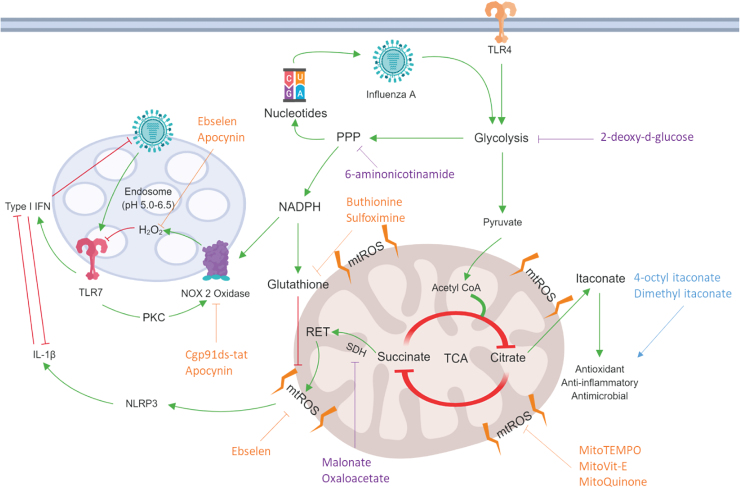FIG. 4.
Therapeutic targets of immunometabolism and ROS against influenza. Influenza is believed to cause a metabolic switch, which upregulates glycolysis and the PPP through a breakdown of the TCA cycle. As a by-product, nucleotides from the PPP form the building blocks for a new virus. NADPH can be used for glutathione production as an antioxidant. Conversely, NADPH can also be used to fuel NOX2 oxidase, which is in its own intricate, negative feedback loop with TLR7 and the virus (169). ROS inhibitors, seen in orange, can be employed to target specific sites, which can alleviate oxidative stress by inhibiting NOX2, mtROS production, or scavenging ROS. Alternatively, therapeutic strategies could include inhibition of metabolic pathways, seen in purple, to shunt viral reproduction and inflammatory pathways through glycolysis (109, 162), PPP inhibition, and SDH (2-deoxy-d-glucose, 6 aminonicotinamide, and malonate and oxaloacetate, respectively). Itaconate analogues, seen in blue, are proposed to increase therapeutic outcomes in response to infection; through increased activity of Nrf2 to upregulate crucial antioxidant genes, to direct antimicrobial and anti-inflammatory effects (110). mtROS, mitochondrial ROS; Nrf2, nuclear erythroid factor 2; SDH, succinate dehydrogenase. Color images are available online.

